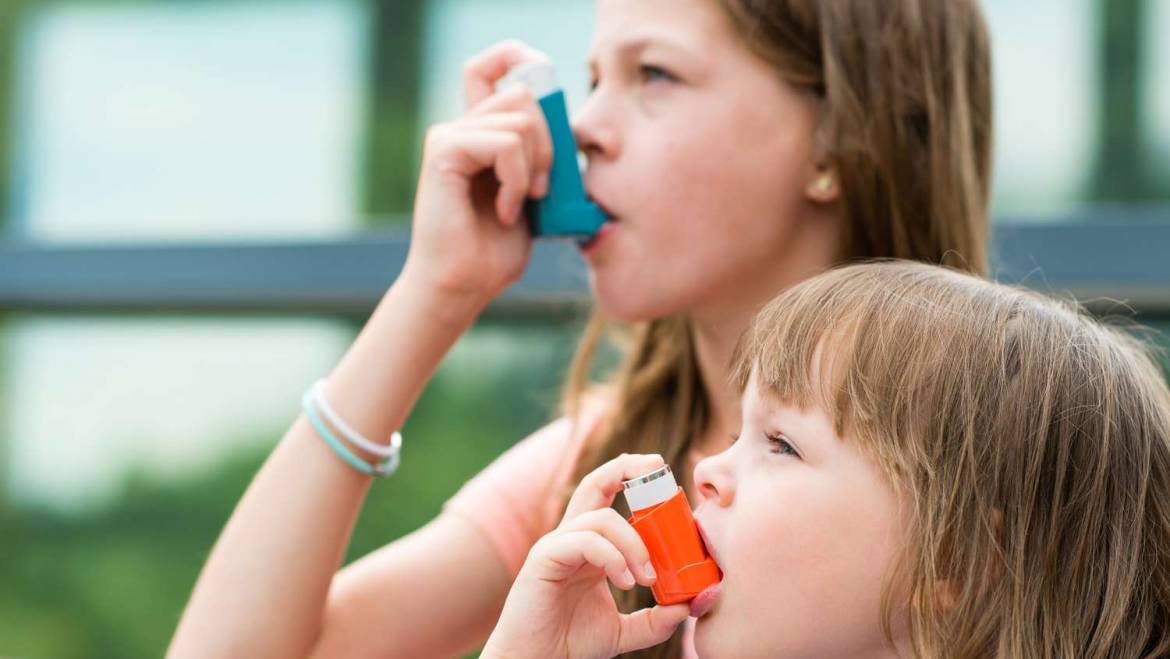Asthma is a common respiratory condition affecting around six million children in the United States, as per data released by the CDC (Centers for Disease control and prevention). Many children suffer from recurrent coughing and chest tightness. In preschool children, about one-third of all children have these symptoms before the age of six, but around 40% of these wheezing preschoolers will continue to have asthma. In older school-aged children, most kids have asthma. In asthma patients, quality of life is affected by asthma control. Sleep disruption and exercise-induced airflow limitations harm kids’ participation in sports and other activities and influence family life. If asthma isn’t well controlled, children may need to visit the emergency department or be hospitalized. This can be especially scary for children who do not know what is happening to them.

Fortunately, controlling your child’s condition can ensure they live a healthy life. A doctor specializing in asthma can work with you to create an asthma management plan to help your child perform every activity other children can do, including sports and other activities.
Symptoms
One can develop asthma at any age; it is not contagious. During an asthma episode, the tubes carrying air to the lungs become squeezed and swollen, producing extra mucus and making breathing difficult. Asthma symptoms can range from a cough that lingers for days or weeks to a sudden and severe inability to breathe effectively. Common symptoms of the condition include:
- Coughing, especially during the night-time
- Wheezing (a whistling sound), especially when breathing out
- Tightness in the chest
- Frequent colds that settle in the chest
- Breathing problems or fast breathing that causes the skin around the neck or ribs to pull in tightly.
Your child might only have one of these symptoms or several of them. Initially, you think it is just a cold or even bronchitis. But if the symptoms recur, it’s the right time to visit a specialist. Pet dander, pollen, dust mites, weather changes, and viral infections like colds can trigger an asthma attack. Avoiding these contributing factors can help reduce the risk of an asthma attack in your child.
Management of asthma in children
Children with asthma must receive appropriate treatment. A doctor can help your child achieve long-term control by working with you to form an asthma management plan. With the right treatment approach, your child can sleep peacefully through the night, regularly attend school, and breathe more easily. The asthma management plan will help you identify when your child’s symptoms are under control, when there is a need for dose adjustments, and when emergency help is needed.
Asthma management involves two key components:
- Maintenance
- Reliever therapies.
When it comes to Maintenance, therapy is considered the mainstay of asthma management, and the goal is that no reliever medication is required. The use of reliever medicine suggests asthma control is poor.
Quick relief – All asthmatics require quick-relief drugs to relieve coughing, wheezing, shortness of breath, or sudden asthma attacks. Your child should always carry this medicine and immediately use it at the first sign of asthma symptoms.
Preventive (controllers) – Many children with asthma require controller medicine to prevent asthma symptoms and attacks. Your child may need an asthma preventive plan for asthma attack; he/she may also need a controller medicine if they use the quick-relief medication too often or frequently require oral corticosteroids such as prednisone for asthma attacks.
Non-pharmacological approach
Non-pharmacological approaches for asthma management include providing education and modifiable risk factors and comorbidities to caregivers and annual asthma screening to assess control and future risk. Education is key to improving caregiver and child understanding of asthma symptoms and management.
Avoiding exposure to environmental factors that may trigger asthma symptoms, personal or second-hand tobacco smoke, food or drug triggers, as well as pollutants and irritants, is vital. A vitamin D deficiency has been noted to be highly prevalent in patients with the atopic condition. There has been evidence that vitamin D deficiency contributes to the disruption of the immune system and the worsening of reactive airways. Increased screening sessions and appropriate supplementation may improve atopic diseases, including asthma.
The verdict!
Asthma treatment aims to gain control over the symptoms, but only a limited number of patients can reach total control. This may be due to an incorrect diagnosis or poor inhalation technique, but in most cases, non-adherence is the main reason for treatment failures. However, coordination of parents with the child is important to set individually picked treatment goals and may help improve control. Lifestyle changes such as avoiding tobacco smoke and allergens can help.
Read More: Is Asthma Proven To Be A Chronic Illness?
admin
Latest posts by admin (see all)
- What is Triluma Cream? Uses, Benefits, and How It Works for Skin - December 26, 2024
- What Causes Dark Spots? Understanding the Science of Hyperpigmentation and How Skin Lightening Products Help - December 26, 2024
- Tretinoin Gel vs. Cream: Which Formulation is Right for Your Skin? - December 20, 2024



